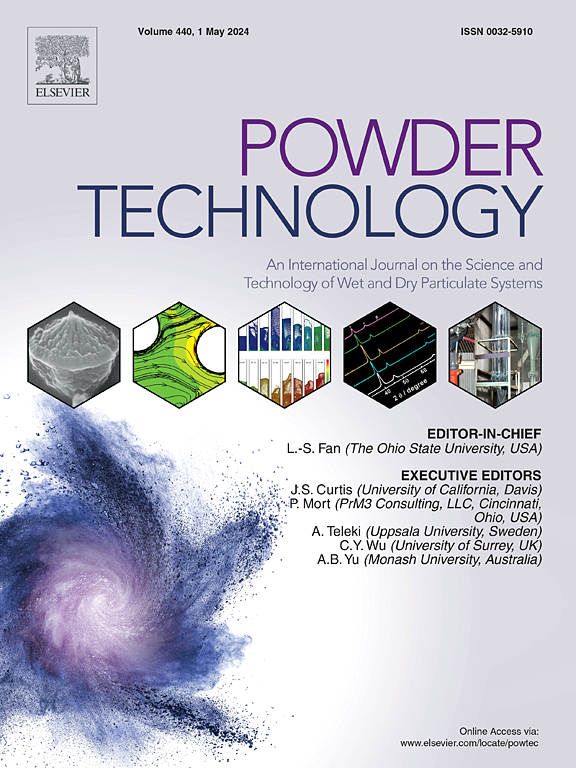通过漩涡诱导管道提高泥浆输送效率并降低能耗
IF 4.5
2区 工程技术
Q2 ENGINEERING, CHEMICAL
引用次数: 0
摘要
尾矿是从矿石中提取 "矿物价值 "后留下的废料。适当的尾矿处理应既经济又环保。本研究报告指出,通过在传统管道中加入漩涡运动诱导管段,锌尾矿水力运输过程中的能效得到显著提高。计算模型根据现有的标准管道实验数据进行了严格测试。所用锌尾矿浆的粒度分布很广,有多个粒度等级,每个等级都有代表性的粒度和浓度。研究发现,在传统管道中加入漩涡诱导管段,可将运输沉淀矿浆的比能耗 (SEC) 降低 35%,尤其是在中高固体浓度的情况下。在测试的各种配置中,带有 10 叶漩涡诱导管段的管道在各种运行条件下的比能耗(SEC)最低。这些发现凸显了漩涡诱导段在提高泥浆输送能效方面的潜力。本文章由计算机程序翻译,如有差异,请以英文原文为准。

Enhanced slurry transport efficiency and energy reduction through swirl-inducing pipes
Tailings are the waste material left after “mineral values” have been extracted from the ore. Proper tailings disposal should be economical and environmentally safe. This study reports significant increase in energy efficiency during hydro-transport of zinc tailings by integrating a swirl-motion-inducing pipe segment into the conventional pipeline. The computational model was rigorously tested against available experimental data on standard pipes. The zinc tailings slurry used has a wide particle size distribution, represented by multiple size classes, each having representative size and concentration. The study found that adding swirl-inducing pipe section to the conventional pipeline decreased specific energy consumption (SEC) by up to 35 % for transporting settling slurry, especially at moderate to high solids concentrations. Among the various configurations tested, the pipeline with a 10-lobed swirl-inducing segment achieved the lowest SEC across the operating conditions considered. These findings highlight the potential of swirl-inducing segments in improving energy efficiency for slurry transport.
求助全文
通过发布文献求助,成功后即可免费获取论文全文。
去求助
来源期刊

Powder Technology
工程技术-工程:化工
CiteScore
9.90
自引率
15.40%
发文量
1047
审稿时长
46 days
期刊介绍:
Powder Technology is an International Journal on the Science and Technology of Wet and Dry Particulate Systems. Powder Technology publishes papers on all aspects of the formation of particles and their characterisation and on the study of systems containing particulate solids. No limitation is imposed on the size of the particles, which may range from nanometre scale, as in pigments or aerosols, to that of mined or quarried materials. The following list of topics is not intended to be comprehensive, but rather to indicate typical subjects which fall within the scope of the journal's interests:
Formation and synthesis of particles by precipitation and other methods.
Modification of particles by agglomeration, coating, comminution and attrition.
Characterisation of the size, shape, surface area, pore structure and strength of particles and agglomerates (including the origins and effects of inter particle forces).
Packing, failure, flow and permeability of assemblies of particles.
Particle-particle interactions and suspension rheology.
Handling and processing operations such as slurry flow, fluidization, pneumatic conveying.
Interactions between particles and their environment, including delivery of particulate products to the body.
Applications of particle technology in production of pharmaceuticals, chemicals, foods, pigments, structural, and functional materials and in environmental and energy related matters.
For materials-oriented contributions we are looking for articles revealing the effect of particle/powder characteristics (size, morphology and composition, in that order) on material performance or functionality and, ideally, comparison to any industrial standard.
 求助内容:
求助内容: 应助结果提醒方式:
应助结果提醒方式:


